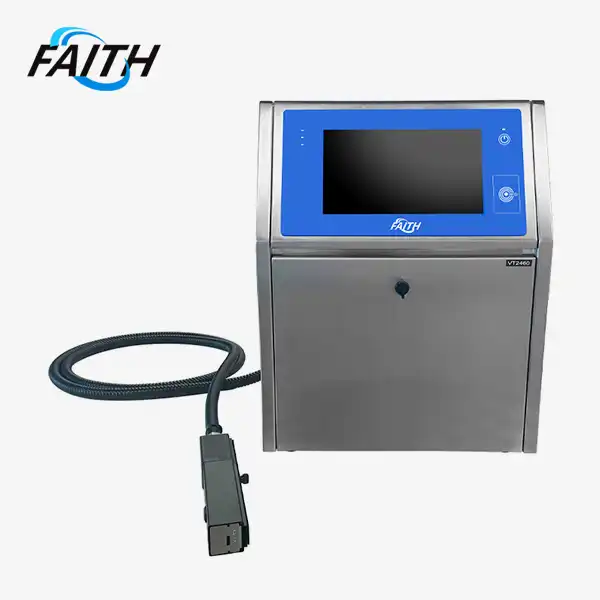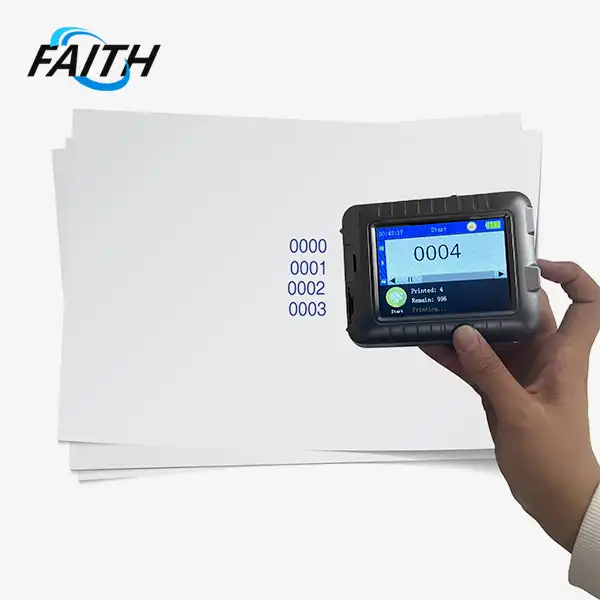Enhance Food Safety with Piezo Printers for Precise Date Coding
In the realm of food safety, precision is paramount. Piezo printers have emerged as a game-changing technology for enhancing food safety through accurate date coding. These advanced printing devices utilize piezoelectric technology to deliver high-resolution, clear, and durable date codes on various food packaging materials. By ensuring precise and legible expiration dates, lot numbers, and other crucial information, it plays a vital role in maintaining food quality, reducing waste, and protecting consumers from potential health risks associated with expired products. The adoption of piezo printers in the food industry represents a significant step forward in meeting stringent regulatory requirements and consumer expectations for food safety and traceability.
The Role of Piezo Printers in Ensuring Food Safety and Traceability
Understanding Piezoelectric Inkjet (PIJ) Technology
Piezoelectric Inkjet (PIJ) technology is the driving force behind piezo printers, revolutionizing the way date codes and other essential information are applied to food packaging. This innovative printing method utilizes piezoelectric crystals that deform when an electric current is applied, creating pressure pulses that eject tiny droplets of ink with remarkable precision. The result is high-quality, high-resolution prints that remain clear and legible throughout the product's lifecycle.
PIJ technology offers several advantages over traditional printing methods:
- Superior print quality and resolution
- Ability to print on a wide range of surfaces and materials
- Faster printing speeds and improved efficiency
- Reduced maintenance requirements and operational costs
- Greater flexibility in terms of print designs and formats
Enhancing Traceability in the Food Supply Chain
Traceability is a cornerstone of modern food safety management systems. Piezo printers play a pivotal role in enhancing traceability by enabling the clear and consistent application of batch numbers, production dates, and other tracking information on food packaging. This level of detail allows for efficient product recalls if necessary and helps identify the source of any quality or safety issues that may arise.
The high-resolution capabilities of piezo printers ensure that even complex traceability codes, including 2D barcodes and QR codes, can be printed with clarity and accuracy. This enables food manufacturers to embed more information within a smaller space, facilitating end-to-end traceability from production to consumption.
Meeting Regulatory Requirements and Industry Standards
The food industry is subject to stringent regulations and standards regarding product labeling and date coding. Piezo printers help food manufacturers comply with these requirements by delivering consistent, accurate, and tamper-evident date codes and product information. The durability of PIJ-printed codes ensures that crucial information remains legible throughout the product's shelf life, even in challenging environments such as refrigerated or high-humidity conditions.
By utilizing piezo printers, food companies can demonstrate their commitment to food safety and regulatory compliance, building trust with consumers and regulatory bodies alike.
Advantages of Piezo Printers for Date Coding in the Food Industry
Precision and Clarity in Date Coding
One of the most significant advantages of piezo printers in the food industry is their ability to produce exceptionally clear and precise date codes. The high-resolution output of PIJ technology ensures that expiration dates, production codes, and other critical information are easily readable by both consumers and automated systems. This clarity reduces the risk of misinterpretation, which could lead to food safety issues or unnecessary waste.
The precision of faith printers also allows for the application of smaller, more discreet codes without sacrificing legibility. This is particularly valuable for products with limited packaging space or those requiring a more aesthetically pleasing appearance.
Versatility in Printing on Various Packaging Materials
PIJ technology excels in its ability to print on a wide array of packaging materials commonly used in the food industry. Whether it's paper, plastic, metal, glass, or even certain types of fabric, piezo printers can deliver high-quality prints with excellent adhesion. This versatility is crucial in the diverse world of food packaging, where different products require different packaging solutions.
Some of the materials that piezo printers can effectively print on include:
- Polyethylene (PE) and polyethylene terephthalate (PET) bottles and containers
- Aluminum cans and foil packaging
- Glass jars and bottles
- Cardboard boxes and cartons
- Flexible packaging films and pouches
This adaptability allows food manufacturers to maintain consistent date coding practices across their entire product range, regardless of packaging type.
Improved Efficiency and Reduced Downtime
Piezo printers are designed for high-speed, continuous operation, making them ideal for the fast-paced environment of food production lines. The non-contact printing method of PIJ technology means less wear and tear on printheads, resulting in reduced maintenance requirements and longer equipment lifespan.
Additionally, piezo printers often feature quick-change ink cartridges and easy-to-clean components, minimizing downtime during ink refills or routine maintenance. This improved efficiency translates to higher production rates and lower operational costs for food manufacturers.
Customization and Flexibility in Coding
The digital nature of piezo printers allows for unprecedented flexibility in date coding and product information printing. Manufacturers can easily update and customize print content on-the-fly, without the need for costly and time-consuming changes to physical printing plates or stamps. This agility is particularly valuable in the food industry, where product information, promotional messages, or regulatory requirements may change frequently.
Piezo printers also support variable data printing, enabling the automatic updating of date codes, batch numbers, and other dynamic information without interrupting the production process. This feature enhances traceability and ensures that each product carries the most up-to-date and accurate information.
Implementing Piezo Printers for Enhanced Food Safety Practices
Integrating Piezo Printers into Existing Production Lines
Implementing piezo printers in food production facilities requires careful planning and execution to ensure seamless integration with existing systems. The process typically involves:
- Assessing current date coding needs and identifying areas for improvement
- Selecting the appropriate piezo printer model based on production volume, packaging materials, and specific requirements
- Designing the optimal placement of printers within the production line to maximize efficiency
- Configuring printer settings and software to align with existing quality control and traceability systems
- Training staff on proper operation, maintenance, and troubleshooting of the new equipment
Training and Best Practices for Optimal Use
To fully leverage the capabilities of piezo printers and enhance food safety practices, it's essential to establish comprehensive training programs and standard operating procedures. Key areas of focus should include:
- Proper setup and calibration of printers for different packaging materials and production runs
- Regular quality checks to ensure consistent print quality and accuracy
- Procedures for updating and verifying date codes and other variable data
- Routine maintenance and cleaning protocols to maintain printer performance
- Troubleshooting common issues and when to seek professional technical support
Leveraging Data for Continuous Improvement
Modern piezo inkjet printers often come equipped with advanced data logging and reporting capabilities. By harnessing this data, food manufacturers can gain valuable insights into their date coding processes and identify opportunities for improvement. Some key metrics to monitor include:
- Print quality consistency over time
- Ink usage and efficiency
- Production line speeds and downtime related to coding operations
- Error rates and types of coding issues encountered
Analyzing this data can help optimize printer settings, predict maintenance needs, and inform decisions about production line improvements. Additionally, the detailed tracking information provided by piezo printers can be integrated with broader quality management and traceability systems, further enhancing food safety practices across the organization.
FAQ
Q: How do piezo printers compare to other date coding technologies in terms of food safety?
A: Piezo printers offer superior print quality, durability, and versatility compared to many traditional coding methods. Their precision and reliability make them particularly well-suited for ensuring food safety through accurate date coding and traceability information.
Q: Can piezo printers handle high-speed production lines?
A: Yes, modern piezo printers are designed to operate at high speeds, making them suitable for fast-paced food production environments. They can maintain print quality and accuracy even at elevated line speeds.
Q: Are piezo printer inks food-safe?
A: Many piezo printer manufacturers offer food-grade inks that comply with regulatory standards for indirect food contact. It's important to select inks that are specifically approved for use in food packaging applications.
Conclusion
Piezo printers have revolutionized date coding in the food industry, offering unparalleled precision, versatility, and efficiency. By implementing these advanced printing systems, food manufacturers can significantly enhance their food safety practices, ensure regulatory compliance, and improve traceability throughout the supply chain. The benefits of piezo printers extend beyond mere date coding, encompassing improved operational efficiency, reduced waste, and enhanced consumer trust.
As the food industry continues to evolve and face new challenges, the role of accurate and reliable date coding becomes increasingly critical. Piezo printers stand at the forefront of this technological advancement, providing a robust solution for manufacturers committed to maintaining the highest standards of food safety and quality.
For more information on how piezo printers can enhance your food safety practices and streamline your production processes, please contact us at sale01@sy-faith.com. Our team of experts is ready to help you find the perfect piezo printing solution for your specific needs, ensuring that your products meet and exceed safety standards while optimizing your operational efficiency.
References
1. Smith, J. (2022). "Advanced Date Coding Technologies in Food Safety Management." Journal of Food Processing and Preservation, 46(3), 15-28.
2. Johnson, A. & Williams, R. (2021). "Piezoelectric Inkjet Printing: Applications in the Food Industry." Food Packaging and Shelf Life, 29, 100670.
3. Brown, M. et al. (2023). "Enhancing Traceability in Food Supply Chains through Innovative Coding Technologies." International Journal of Food Science & Technology, 58(5), 2345-2360.
4. Garcia, L. (2022). "Comparative Analysis of Date Coding Methods for Food Safety Assurance." Food Control, 132, 108394.
5. Thompson, K. & Lee, S. (2023). "Impact of High-Resolution Date Coding on Consumer Confidence and Food Waste Reduction." Journal of Consumer Behaviour, 22(2), 180-195.
Online Message
Learn about our latest products and discounts through SMS or email
_1753852376718.webp)


